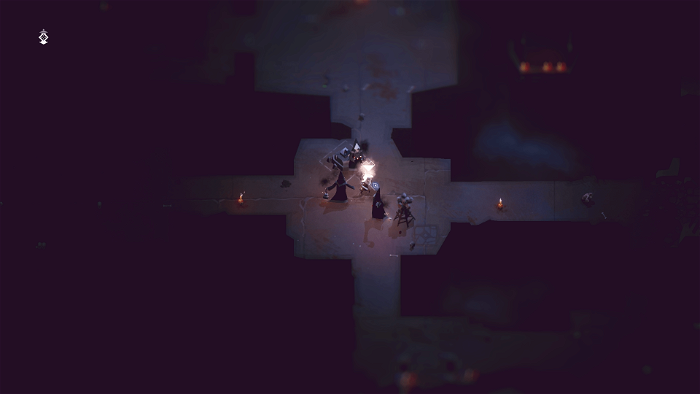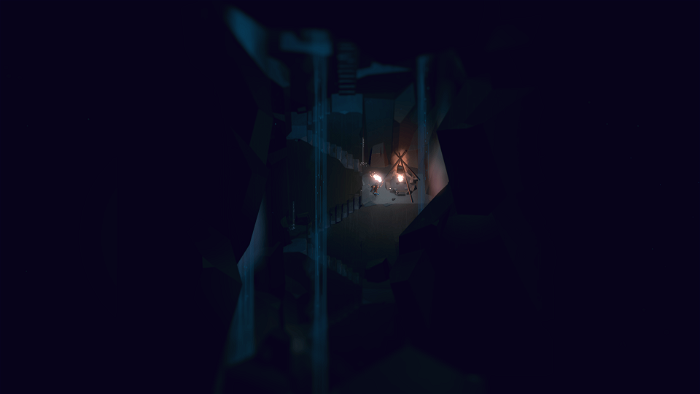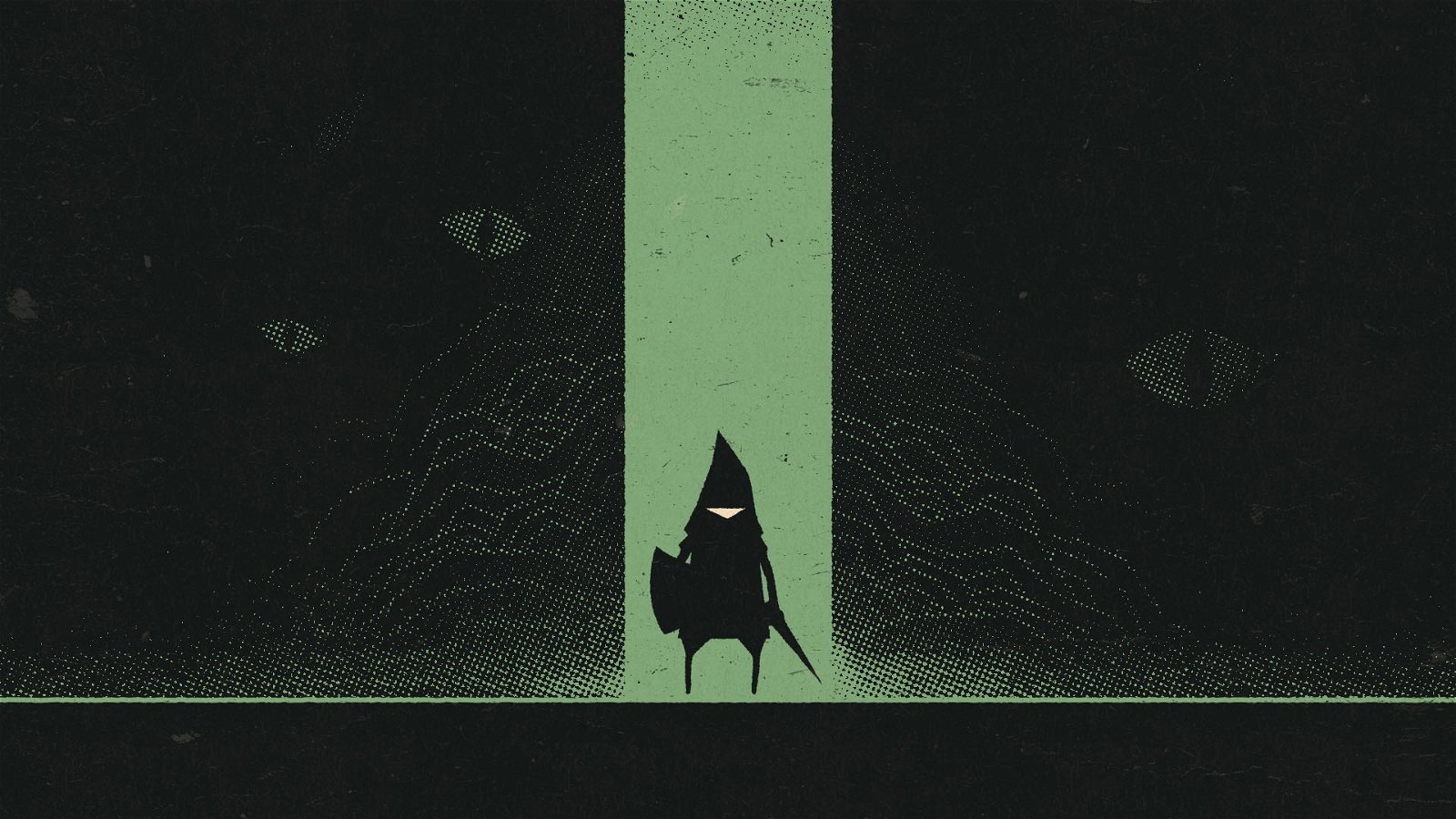Sustaining yourself as an indie developer is a challenge that so many teams have difficulty overcoming. There have been countless titles that have emerged on the scene that excited gamers, which in turn brought recognition and popularity to the developers. And like that one-hit-wonder band whose song was on the lips of everyone for that short period of time, upon their follow-up release, they are often met with the disappointing realization that for all their hard work and effort, their new game is unable to live up to their prior success.
So what’s the secret to success for well-established indie developers like Capybara? Looking back at their consistent success, it becomes obvious that their strength lies in taking a simple idea and bringing a unique innovation that pushes the boundaries of genre definition. It’s no wonder that Below is one of the most eagerly anticipated indie games of this year. Capy is taking a rogue-like dungeon crawler and making it their own.

“It was an idea that boiled up a really long time ago at the studio,” Co-founder and President of Capybara Games, Nathan Vella tells CGM. “Our creative director, Kris Piotrowski, was playing a whole bunch of hardcore, super punishing rogue-likes, and said, ‘what if we did it in our style? What if we made it aesthetically driven and experimental and put the Capy touch on it?’ At the time I didn’t even know what a roguelike was so I played some and was like, these are intense, hardcore games. But he convinced us that we could do an interesting personal take inspired by it, rather making a pure rogue-like. We prototyped it for a long time—over a year—just a couple of people seeing if there was something there. At a certain point we really started to dig it and turn it into a full game and we’ve been working on it that way since then.”
Below is a genre-blending, procedurally generated roguelike, with elements of adventure games, dungeon crawlers, and sword and shield. There are no instructions. The lack of guidance is there to serve a purpose—exploration. It’s how Capy is able to bring new life to the genre and completely immerse the player in the experience.
“It’s a game about survival,” Nathan explains. “You have to drink and eat and stay warm. You have to craft. You have to fight and use the flora and fauna. The combat is really there to serve as survival; to allow you to live longer; to explore more. The longer you explore, the more likely you are to discover what the game is about: why you’re there, what the actual goals are, because there’s no text, no dialogue, no exposition. The only text in the game is in menus, that’s it.”
As Nathan outlines, “the game is not a rogue-like. It is very inspired by certain components of roguelikes that we wanted to try like, when you die, you die.” He goes on to say that “you don’t just play as the same person, we want to have it become this idea of life, after life, after life and we wanted to do procedural generation but we didn’t want it to be grid based and tiles and squares; we wanted it to seem natural and feel like a cave system. So it’s all about us trying to… it sounds kind of hokey when I try to say it but, do it our way. Put our brains into it and not worry about the conventions of that “genre” or “subgenre” or whatever you want to call it.“
It’s that aspect of design that makes this a truly different experience from any other Rogue-like or dungeon crawler on the market. Nathan goes on to describe how. “You arrive at an island and at the start it’s just this relatively small island but the depths to which you go down are very deep. Each layer has a whole bunch of rooms that are interconnected with a collection of new paths and dead ends. In that respect, it’s feels like the biggest, longest game that we’ve made so far. Achieving the goal of the game is near impossible to get in a single life. So part of it is building upon the successes and achievements of your past lives and part of that requires you to have a process, and that process means that there’s a lot of investment. I mean, you could just pick it up and slash around. It’s cool; it’s fun to play it in an easier mode. But if you get serious about the game, there is a ton to find. It might not be as long as Clash of Heroes—which is an old game we made and it’s like 20 hours of gameplay—but you will play Below for longer than that because you need to build, you need to learn, you need to grow as a player, but you also need to explore as the character.”

And Nathan means explore. Players must explore their way through the map, the system, the narrative, the controls, everything. To facilitate this, Capybara decided to go big—literally. Below uses the ubiquity of high fidelity 1080p to create a sense of scale that’s completely unexpected from a typical roguelike.
“Instead of going in closer and higher rez, we zoom out and create a sense of scale that’s completely different to remind the player that you are tiny and feeble and one mistake away from death. But also to allow for the game to have dungeons exist on a single screen, which is, if you didn’t have that high resolution, it would be so much harder to cram so much content into a single 1080p screen worth of stuff. This zoomed out is us trying to think about these thematic things but also, let’s look at a sword and shield dungeon-crawler from a different perspective, by pulling the camera away. And we’re a very aesthetically driven studio. We love making games that look different and this was a huge challenge. It is different and that is important in a video game nowadays, for it to not look like something they’ve already seen.”
But creating something of that scale is not without its challenges, Nathan tells us. “This game has taken us a long time to make and a huge part of that is experimenting with how to—aesthetically and narratively and gameplay-wise and platform wise and everything—deal with all of that. “
Although there is still no definitive date, Below is expected to be released this summer on Steam and XBox One. Despite this, there is a large community of fans who are still eager to dive into it, anxious to see just how Capybara has pushed the envelope this time.
“We hope that people are still excited about it because we’re still excited about it,” Nathan tells us with obvious enthusiasm. “It’s hard to talk about a game for as long as we’ve talked about it—for over three years. For us, it’s about building something that can support a community of people that are interested in finding out all of the little secrets and the nooks and crannies of it. I like to play it, so at least that’s one person who’s stoked about it.”




